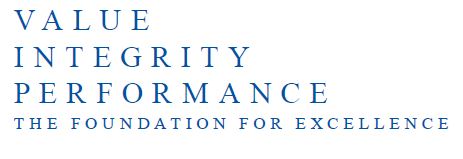August 18, 2025 |
The U.S. banking sector is currently undergoing a profound transformation with the long-standing trend of stringent regulation having reached a pivotal inflection point. The previous U.S. banking regulatory environment, particularly following the 2008 Great Financial Crisis, was characterized by stringent oversight, higher capital requirements and robust consumer protection measures. Key regulations including the Dodd-Frank Act, which imposed strict capital and stress testing requirements on banks, expanded the powers of the Consumer Financial Protection Bureau (“CFPB”), and increased regulatory scrutiny to prevent systemic risk and protect consumers. In contrast, the current U.S. administration is pursuing a strong deregulatory agenda, seeking to ease capital requirements for large banks, reduce the enforcement powers of the CFPB and scale back environmental, social and governance (“ESG”) and climate-related disclosure rules. This shift is intended to reduce compliance burdens, promote economic growth and foster financial sector expansion, including a more favourable stance toward bank mergers and industry consolidation.
Trump 2.0 Ushers in a Deregulatory Wave for US BanksThe confirmation of Federal Reserve (“Fed”) Governor Michelle Bowman to serve as the new Fed Vice Chair for Supervision in early June sends a strong signal for regulatory relief for the banking industry. Bowman has been an influential voice on bank regulation and supervision ahead of her nomination and confirmation and we expect her to be a driving force in bank deregulation under Trump 2.0. Currently, Bowman has already set out a broad bank deregulatory agenda through focusing on areas including review and reform of the capital framework; review of regulations and information collection; and reconsideration for approaches to the applications process. Other federal financial regulators are also continuing work in parallel, spanning M&A and their own work on bank capital. Unlocking Capital for Dividends and BuybacksMost recently, in a landmark move in late June 2025, the Fed, along with two other key bank regulators, proposed a major change to relax capital rules for the largest U.S. banks. The new proposal would reduce the amount of capital that banks are required to hold as a safety cushion by about 27% for these big banks’ subsidiaries. This change would free up about $210 billion in capital at the bank subsidiary level, which is equivalent to nearly 9% of total bank capital in the US1. It is the most significant deregulatory effort in years and a direct catalyst for bank stock performance. This proposal, in addition to freeing up capital, also helps provide greater balance sheet flexibility. The excess capital can now be deployed more efficiently, fueling lending growth, and will be available for enhanced share buyback programs and dividend increases. Opportunity for Improved Profitability and Higher ValuationsSeparately, the Federal Reserve Board released the Dodd-Frank Act Stress Tests results in June which showed a decline in Stress Capital Buffer (“SCB”) levels for 21 out of the 22 banks. The SCB represents a financial cushion that the biggest banks are required to keep during economic downturns. In particular, Goldman Sachs and Wells Fargo (Exhibit 1) saw the greatest reductions in their SCBs, declining to 3.4% and 2.5% from 6.1% and 3.7%, respectively. Many major U.S. banks including Goldman Sachs, JPMorgan Chase, Bank of America, Wells Fargo, Citi and Morgan Stanley announced dividend increases and/or share buybacks following the release of the results. We believe the easing of capital requirements presents significant opportunities for capital deployment, lending growth, and enhanced shareholder returns. For bank stocks, this signals a clear path to improved return on equity and higher valuations, as the market factors in a less restrictive and more profitable operating environment. |
|
|
Outlook: A New Growth Era for US BanksWe believe there is more regulatory relief to come, which should provide further tailwinds to the banking sector. Large and mid-sized banks would be the most immediate and direct beneficiaries, providing them with additional capital for growth and enhancing capacity for shareholder capital returns. For regional and community banks, this broader pro-growth regulatory sentiment creates a more favorable operating landscape, reducing the threat of future regulatory encroachment and supporting strategic expansion. The overarching theme is that the peak of regulatory pressure has passed. We are entering a new era for banks, and we believe these changes have potential to survive the next presidential election, serving as a multi-year catalyst to drive bank stock performance significantly higher. Brompton’s ApproachAt Brompton, we have decades of experience investing in Financials. Investors can get exposure to the deregulation theme through Brompton North American Financials Dividend ETF (BFIN) which currently has a significant exposure to U.S. banks. BFIN provides monthly distributions and the opportunity for capital appreciation through investing in an actively managed, diversified portfolio of North American financial services companies. We also use an actively managed call writing overlay to earn option premiums and lower the overall volatility of returns associated with owning a portfolio of equity securities. |

Maggie Meng
Senior Investment Analyst
Maggie Meng has nearly a decade of experience in the financial industry and is a Senior Investment Analyst with Brompton Funds. Ms. Meng is a CFA Charterholder and is a member of the Toronto CFA Society. Ms. Meng is also a Chartered Professional Accountant, Certified General Accountant and is a member of the Chartered Professional Accountants of Ontario. She received a Bachelor of Commerce degree from the University of Toronto.








